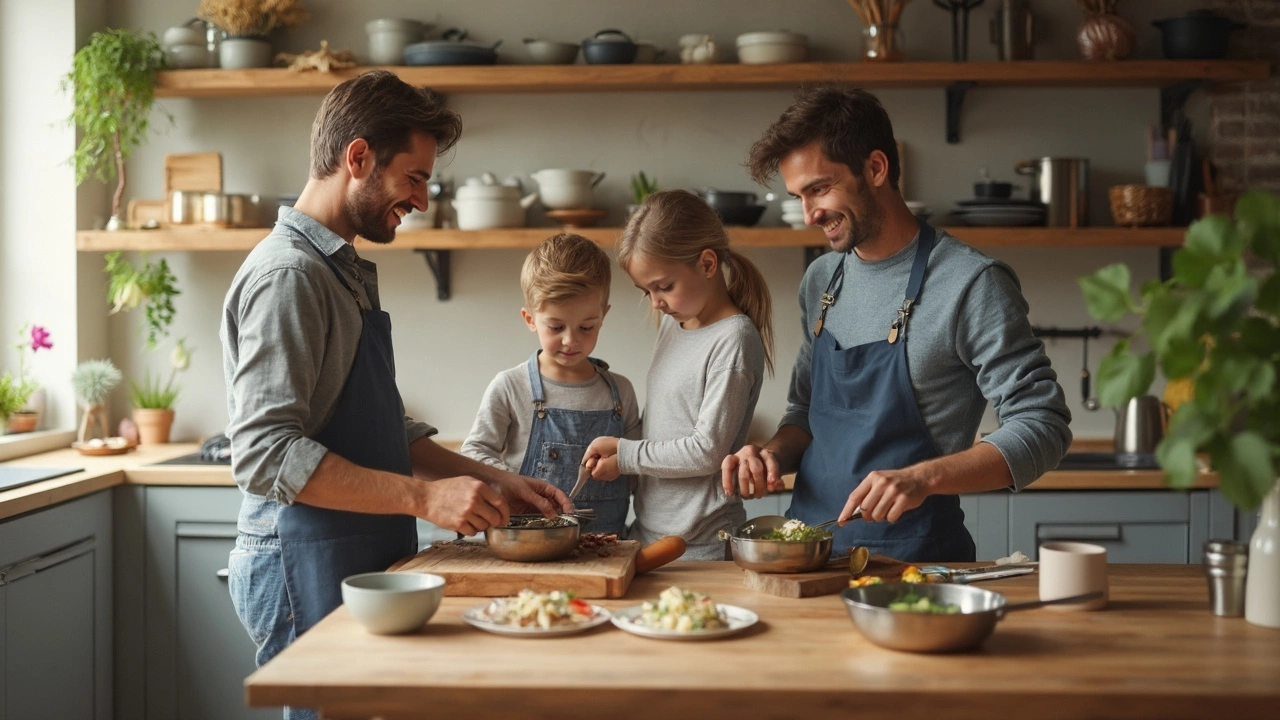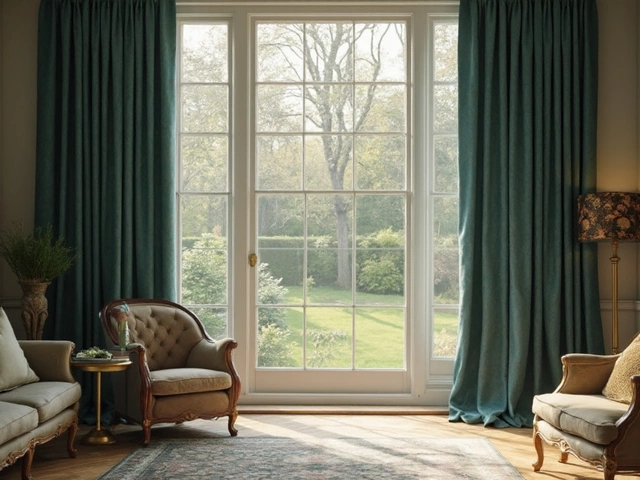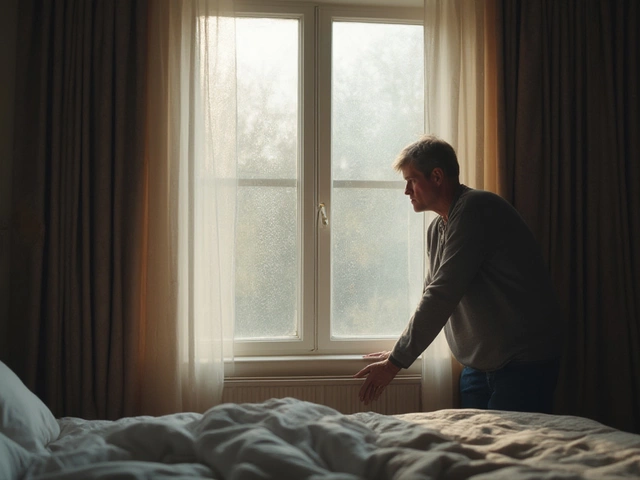Are Non Stick Pans Still Unhealthy? What You Need to Know

Remember when everyone started tossing their non stick pans, convinced that a single omelet meant mystery chemicals in breakfast? That old panic came from stories about Teflon and chemicals like PFOA, which used to be a real issue in the kitchen. But is that fear still relevant in 2025? Let’s pull apart fact from outdated fears and see what’s really going on with today’s non stick cookware.
If you love easy clean-up and cooking eggs that slide right off the pan, non stick is tough to give up. But nobody wants their frying pan making them sick. Here’s where things stand right now: most of the scary substances people worried about have changed—or disappeared—in modern pans, thanks to bans and better regulations. But it’s not just black and white. You still need to know what’s actually in your cookware, and how you use it makes a difference too.
Why does this matter? Because not all non stick pans are created equal. Some brands get fancy with labels, but the details hide in the fine print and the materials list. There are new worries, like PFAS in some pans, but also plenty of safe options if you know what to look for. We’ll break down which chemicals are worth losing sleep over, how to spot a better pan, and some real-world tips to keep your kitchen as safe as possible.
- The Bad Rep: Why Non Stick Pans Got Controversial
- What’s Changed with Today’s Non Stick Coatings?
- Understanding Teflon, PFAS, and Other Chemicals
- Real Risks: What Happens When Pans Overheat or Scratch?
- How to Pick a Safer Non Stick Pan
- Smart Tips for Long-Lasting, Safe Use
The Bad Rep: Why Non Stick Pans Got Controversial
Non stick pans shot up in popularity because nobody likes cleaning burnt-on food. But pretty soon, stories started surfacing about possible health risks from these easy-clean pans, especially those with Teflon coatings from the 1960s onward.
The big worry was over a chemical called PFOA (perfluorooctanoic acid), which was used in making Teflon. Studies linked PFOA exposure to several health problems like higher cholesterol, some cancers, and thyroid issues. The scary part? PFOA doesn’t easily break down, so it was popping up basically everywhere: water, soil, even human blood.
Things got even messier with research showing that when non stick pans got really hot—think forgotten pan on a hot stove—the coating could break down and release toxic fumes. There were famous cases in the early 2000s where pet birds died from fumes coming off overheated Teflon pans. That definitely got people’s attention and trust in non stick cookware took a nosedive.
Here’s a quick breakdown of some facts that fueled the panic:
- PFOA was classified as a “probable human carcinogen” by the U.S. EPA.
- Tests showed almost every American had some PFOA in their blood by the early 2000s.
- Bird deaths from overheated non stick pans were confirmed by multiple vets.
- Bloomberg reported that a study found elevated cancer rates near chemical plants making PFOA in West Virginia and Ohio.
To see how bad it looked, check out this quick table showing how many people had exposure to PFOA two decades ago:
| Year | % of Americans with Detectable PFOA |
|---|---|
| 2000 | Over 98% |
| 2005 | 99% |
This legacy made the term “non stick pans” almost like a red flag in kitchen safety conversations. Even today, parents and home cooks still bring up these stories. But it’s worth asking—how much has really changed since then?
What’s Changed with Today’s Non Stick Coatings?
So, here’s what’s really different: Most of the old non stick pans got their nonstick magic from a chemical called PFOA. PFOA, short for perfluorooctanoic acid, could stick around in your body, the environment, pretty much everywhere. That freaked out everyone from scientists to home cooks. But the big news? Since 2015, all major brands in the US and Europe stopped using PFOA in their non stick coatings.
Newer pans use other chemicals in the PFAS family, like PTFE (which is also known as Teflon), but not the original, most worrisome ones. A lot of brands even splash 'PFOA-free' right on the box. While some folks argue that "PFAS-free" labeling is better, most of what’s on shelves right now ditches the worst offenders.
Check out this handy table comparing the old-school and new versions:
| Coating Type | Used Before 2015 | Used After 2015 | Health Risk Level |
|---|---|---|---|
| PFOA-based PTFE | Yes | No | High (now banned) |
| PTFE (Teflon, PFOA-free) | Rarely | Yes | Low, with proper use |
| Ceramic | No | Yes | Low |
| Silicone | Rare | Yes | Low |
But don’t just trust the label. Some knock-off pans from outside the US or EU might still sneak in banned chemicals. Always check where it’s made and look for brands that clearly list what’s in their non stick coating.
Another thing: there’s a whole new wave of non stick pans coated with ceramic or silicone. These work well at lower temps and don’t rely on fluorinated chemicals. While ceramic coatings aren’t perfect (they can wear out faster than PTFE), they’re a solid option if you want to dodge *all* PFAS.
The bottom line? Most modern non stick pans are safer than what your grandma used, but it pays to know what you’re buying. If you spot a pan labeled as non stick pans and it’s PFOA-free or ceramic, you’re on the right track—just stick to well-known brands to play it safe.
Understanding Teflon, PFAS, and Other Chemicals
Here’s the lowdown: Teflon isn’t some evil chemical—it’s actually the brand name for a coating called PTFE (polytetrafluoroethylene). PTFE itself is pretty stable, so as long as you don’t scorch it, it’s not much of a health risk. The scare started with a different chemical called PFOA (perfluorooctanoic acid), which was used when making PTFE. PFOA stuck around in people and the environment, and research linked it to various health problems, like some cancers and immune issues. Pretty serious stuff.
Good news, though. Since 2015, PFOA has been banned in the US and Europe for making cookware, so those old risk factors are mostly a thing of the past. But manufacturers switched to other chemicals, including a group called PFAS (which stands for per- and polyfluoroalkyl substances). There are thousands of PFAS, and some are still being studied to find out if they're any safer. The problem? They stick around in the environment and people for years—hence the nickname ‘forever chemicals.’
Check out this quick comparison of what’s what:
| Chemical | Used for | Main Worries | Where You’ll Find It Now |
|---|---|---|---|
| Teflon (PTFE) | Non stick coating | Releases fumes if overheated | Most modern non stick pans |
| PFOA | Used to make PTFE (before 2015) | Linked to cancer, banned in cookware | Hardly anywhere—mostly phased out |
| PFAS (other types) | Other non stick coatings, waterproofing | Last a long time in body/planet | Some new non stick pans, fast food wrappers, etc. |
So, are non stick pans covered in dangerous stuff now? Here’s what matters: almost all reputable brands are free of PFOA. If a label shouts “PFOA-free,” that’s standard on shelves. But the story doesn’t end there—some pans use other PFAS types, and science is still catching up with what’s safe long-term. That’s why it’s smart to check if your pan is free from all PFAS, not just PFOA.
- Never heat an empty non stick pan—PTFE breaks down and gives off fumes at temps above 500°F (260°C).
- If your pan says “ceramic non stick,” it’s usually PFAS-free, but double-check the packaging just to be sure.
- Scratched or peeling pans? Time to replace—bits can flake off into food, and old coatings may pre-date safety rules.
Reading labels and digging into a company’s website for details can actually pay off. No one wants to play chemical roulette with breakfast.

Real Risks: What Happens When Pans Overheat or Scratch?
Ever heard that non stick pans give off toxic fumes if you crank up the heat too high? That’s not just a rumor—it’s true, especially with older pans. If a non stick pan is heated above 500°F (about 260°C), the coating can break down and start releasing fumes into the air. These fumes won’t poison you right away, but they can bother your throat and eyes. If you have pet birds, it’s another story: those fumes can actually be deadly for them, even in small amounts.
Scratches are another issue that’s easy to shrug off. Tiny chips or cracks in the coating can lead to flakes mixing with your food. If your pan was made before 2015, there’s a slight chance it still has some PFOA in the non stick pans coating, and you don’t want that in your food. Newer pans are less risky because PFOA’s out, but eating bits of any synthetic coating—old or new—isn’t exactly appetizing. Plus, scratches mean food sticks more, defeats the point of non stick, and the coating keeps breaking down faster over time.
So, what are the most practical tips to avoid these risks? Here’s what matters the most:
- Never use your non stick pans on high heat. Stick to low or medium—eggs and pancakes don’t need a raging flame anyway.
- Keep metal utensils away (spatulas, spoons, whisks). Go for wood, silicone, or plastic to prevent scratching.
- If your pan looks banged up, with lots of scratches or discoloration, it’s time to replace it—no point risking your health for a $30 skillet.
- Wash gently with a soft sponge. No abrasive scrubbers, or you’ll just wear down the coating faster.
It’s pretty simple: treat your non stick pans with care and don’t overheat them. That’s how you keep the kitchen safer and food free from unwanted extras.
How to Pick a Safer Non Stick Pan
Picking the right non stick pan isn’t rocket science, but there are real differences between brands and coatings. You want something that keeps your food sliding but doesn’t add worries to your meal prep. Here’s what really counts when you’re choosing a non stick pan in 2025.
- Look for "PFOA-free" or "PFAS-free" labels: These chemicals are the ones that made headlines for health risks. While PFOA has been phased out since 2015 in the U.S., imported pans or older stock could still have it. PFAS covers a wider family—avoid these when you can.
- Check the manufacturer and country of origin: Stick with brands known for quality and clear disclosures. If it just says "non stick" with no mention of what's actually in the coating, that’s a red flag. European and North American cookware usually meets higher safety standards.
- Consider ceramic-coated pans: Ceramic coatings don’t use PFAS or PTFE at all, making them a good choice if chemical exposure worries you. Just know they wear out faster than classic Teflon but work well for low-heat cooking.
- Be wary of "green," "eco," or "stone" pans with no data: These terms sound healthy but mean nothing if the brand doesn't list actual chemicals or standards. Marketing can be sneaky, so always read beyond the front of the box.
- Review third-party test results: Sites like Consumer Reports, Wirecutter, or even YouTube reviewers often test popular pans for real-life safety and durability. Don’t just trust the label—see what happens when home cooks put it to work.
Most importantly, don’t stick with old non stick pans that are chipped or flaking. Even the safest pan isn’t safe once the surface is damaged. And if a deal seems too good to be true, double-check the details—cheaper pans are where hidden chemicals love to hide.
Smart Tips for Long-Lasting, Safe Use
If you want your non stick pans to stay safe and last longer, it mostly comes down to how you treat them. These tricks aren’t just about making your pan last for years—they help keep chemical risks low too.
- Never crank the heat: Non stick coatings can start breaking down at around 260°C (500°F). Stick to low or medium heat, since high temps can send nasty fumes into the air and ruin the coating.
- Always use the right utensils: Metal spatulas are a no-go. Stick to wood, silicone, or plastic so you don’t scratch the surface. Even tiny scratches can cause the coating to flake off into your food.
- Hand wash for better results: Skip the dishwasher if you can. Dishwasher detergents and heavy water jets wear down the coating. Warm water and a soft sponge is all you need.
- Store carefully: Don’t pile other pans on top without protecting the surface. Use a pan protector, dish towel, or even a paper plate to keep scratches away.
- Toss pans when damaged: If you see the coating peeling, chipping, or badly scratched, it’s time to replace the pan. Eating flakes of non stick material is nobody’s idea of a good meal.
Here’s a handy chart showing what’s safe for non stick and what to avoid:
| Action | Safe for Non Stick? | Why? |
|---|---|---|
| Cooking on high heat | No | Can break down coating and release fumes |
| Using metal utensils | No | Scratches surface, ruins pan |
| Non stick approved spray oils | In moderation | Some sprays can cause buildup |
| Hand washing with soft sponge | Yes | Keeps coating safe |
| Soaking in water | Yes | No harm to the coating |
| Storing with a protector | Yes | Prevents scratches |
One last thing—if you want to play it extra safe, keep a window cracked or use a kitchen fan when you’re heating any non stick pan, just in case. Little habits like these make a big difference in both your food and peace of mind.





